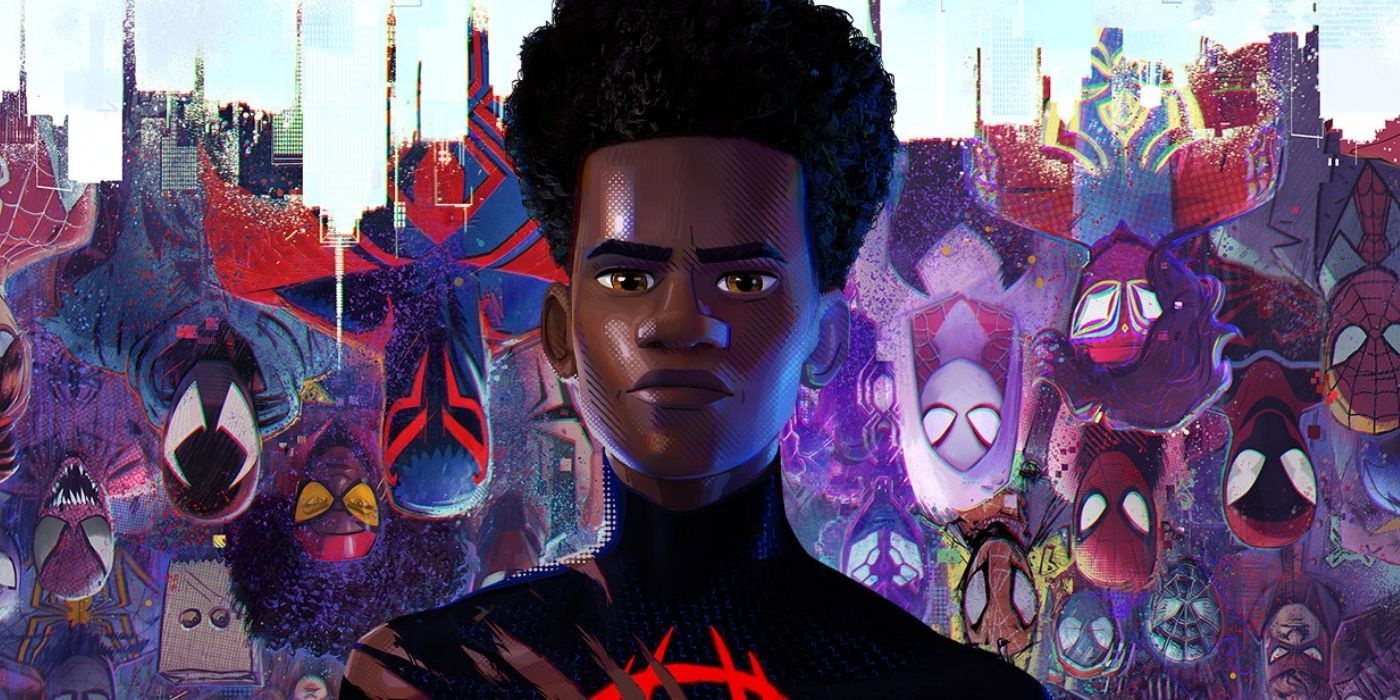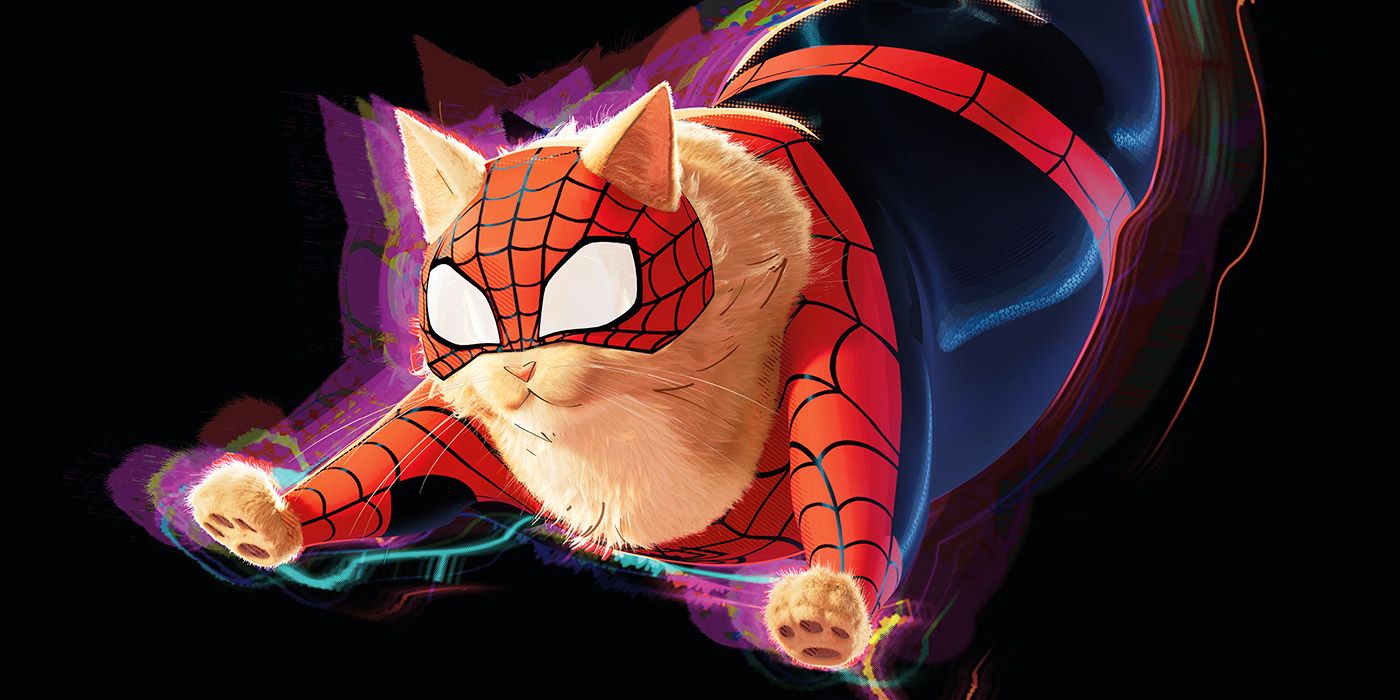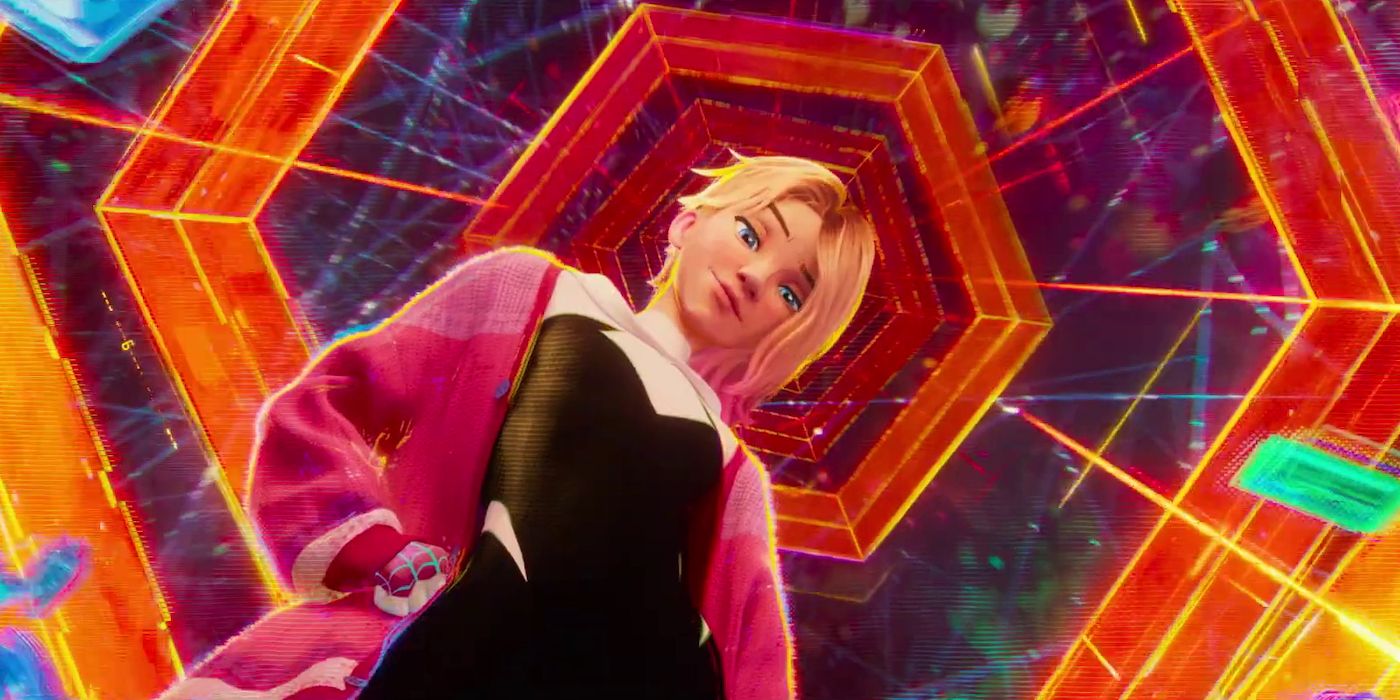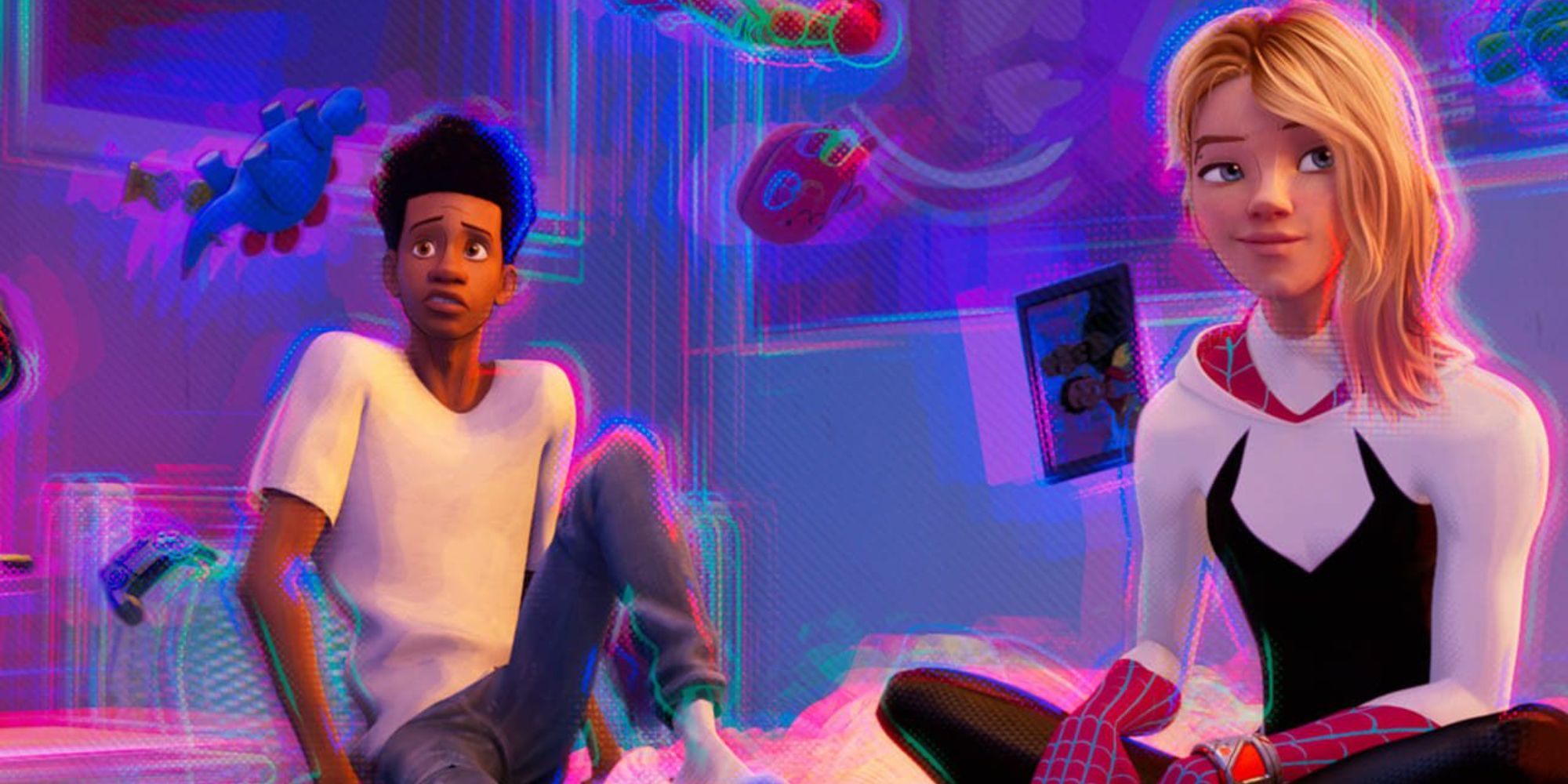In 2018, Sony’s Spider-Man: Into the Spider-Verse blew audiences away with its inspired story, co-penned by Phil Lord, and style, and introduced us to the Spider-Verse. Now, Shameik Moore is back as Miles Morales in Spider-Man: Across the Spider-Verse, and Lord was joined by frequent collaborator, Chris Miller, to take fans deeper into the tangled Multiverse web of Spider-People when a new, uniquely powerful foe arises. With Across the Spider-Verse hitting our dimension on June 2, Drumpe’s Steve Weintraub spoke to the writing duo all about this two-part sequel, new characters, spinoffs, Spider-Man: Beyond the Spider-Verse, and tons more.
In Miles’ next chapter, Lord and Miller discuss with Weintraub their thought process on continuing the story of Spider-Man, as it pertains to Brooklyn’s Miles Morales. Of exploring the idea of a one-stop hub for all Spider-People, courtesy of alter-Spider-Man, Miguel O’Hara (voiced by Oscar Isaac), they tell us, “Everything that we do, we’re always trying to find a new way to tell a story that feels like it honors the thing that we love so much.” The duo explains how they chose which Spider-People to include in the sequel and why, as well as how they landed on what some Spider-Man fans consider to be an odd choice for an antagonist, The Spot (voiced by Jason Schwartzman). Aross the Spider-Verse also features the vocal talents of Hailee Steinfeld as Gwen Stacy, Jake Johnson as Peter Parker, Issa Rae, Daniel Kaluuya, Andy Samberg, and more.
As far as what exists Beyond the Spider-Verse, Lord and Miller discuss the rumored Spider-Man Noir live-action series, whether Nicolas Cage will be involved, more Spider-Verse saga films, and all the dedication and hard work that goes into creating them. They talk rewrites, deleted scenes, which characters almost didn’t make the final cut, if we’ll see even more Spider-People in later movies, and what their next project is. For all of this and tons more, check out the full interview in video or read along in the transcript below.
Drumpe: I’m gonna start with congratulations for not crashing the Ferrari. I think you guys have done it again, and I wish that the third movie was coming out next week. You guys know that I’m a fan of when you’re directing, and since the two of you are sitting here, I have to ask, what is the next project you are directing?
PHIL LORD: We’re trying not to commit ourselves to anything. We’re very excited about a bunch of our future projects. We’re particularly excited about Project Hail Mary, which, you know, once we get through the various strikes, and get all that buttoned up, we’re hoping to get to work on it.
So that is probably your next project?
LORD: I’m looking at Chris because he’s more responsible than I am.
CHRIS MILLER: Yeah, obviously there’s a lot to figure out, but it’s looking that way.
My one other thing before getting into the movie, there’s been talk of a live-action Spider Noir series, and so I’m just curious, is that actually something that’s really moving forward?
LORD: Yes.
MILLER: It is, or at least it was until the writers’ strike and everything shut down. But once that gets resolved, we’ll get back into it. But it’s coming along nicely.
Is there any chance Nic Cage will be involved?
LORD: There is any chance. [Laughs]
[Laughs] Got it. So the first film was called Into the Spider-Verse, the sequel is Across the Spider-Verse, and the third one is Beyond the Spider-Verse. I have realized that these are very literal titles, and now that I’ve seen the second movie, is there any chance that any of these characters will be seen in live-action because it’s Beyond the Spider-Verse?
MILLER: I will say that what’s special about this film is the fact that we can represent worlds in unique styles, and every world looks like a different artists’ hand, and the animation style, and everything about it, is unique and bespoke for each world that it goes into, and so that could be anything. But if the movie itself was in live-action, then you wouldn’t be able to take advantage of all of that. That said, all things are possible in the Multiverse.
I don’t wanna get specific, but there are moments in this movie that exist in very a small pocket, if you will. So that’s why I was wondering if “Beyond” could mean a small pocket of live-action?
MILLER: Right. It means a lot of things, but it also means we see a sort of map representation of the known Spider-Verse, but there are things that can exist outside of that web of life and destiny, if you will.
Obviously, the first film is a huge hit, people love it. People are going to love this movie, and I know that the studio loves the fact that these movies are incredible. Do you think that more spinoffs and other offshoots, or other movies will continue, or do you envision this as a three-chapter installment?
LORD: Well, one chapter at a time [laughs]. I think it’s obvious that there’s infinite possibilities, that the only thing that’s finite is the amount of energy that we all have.
MILLER: These things are very exhausting, hugely ambitious, and take a lot of people working really hard and dedicating themselves to doing something new and special, so after each one we’re all so exhausted. Knowing that we have another one that we have to finish is daunting in its own way because we wanna make sure that it’s as excellent as those that came before it, and surprising and new, and unlike anything you’ve ever seen before. So thinking about beyond doing this trilogy is quite terrifying.
LORD: That’s a good title though: Beyond Beyond the Spider-Verse.
I’m so curious about the writing process. How did it end up with two films? Was it one of these things where, in the development process you realize, “Oh my God, this is such a huge story, we want two films,” or was the studio whispering a little bit, “Hey, we’d love two?”
MILLER: It really was because the story we were working on, we realized, later than we should have, that we were trying to jam two movies into one movie. And we realized that what became this film was its own full movie, it had a beginning, middle, and end. Miles starts one way and he comes full circle, and is a different person who’s grown up and has a completely different attitude by the end of it. Gwen and her father have a beginning, middle, and end, all the characters have an arc. And so it felt like, “Oh, this is a whole movie, but we’re trying to jam another movie to the end of it.” So listening to the film itself is what made us realize, “Oh, this is the second part of a trilogy,” and so we decided to make that move, and I think it was for the best because it wouldn’t allow us to dig in on this on and emotional level.
LORD: It made the movie better.
How happy was Tom Rothman and everyone at the studio when you said, “I think we need to make two?”
LORD: [Laughs] I’d say that they embraced the idea.
MILLER: But they weren’t super excited about the fact that we said we were going to need more time.
LORD: Yeah, they didn’t love that part.
MILLER: They loved the idea of it coming out last year more.
LORD: But they’ve been incredibly supportive and have always known that the brand of these films is innovation and surprise, and they have to be magnificently rendered, and they’ve always given us what we need to pull that off.
I want to thank every animator, every single person who worked on this movie and the first movie for making awesome stuff, but also the studio. The thing that I think a lot of people don’t realize is that the animators have so much of themselves in this movie, and that is so unique in Hollywood.
LORD: Literally, they’re filming themselves doing all of the acting, and then composite, like, five versions of themselves because there’s five characters in the scene.
MILLER: And then they use that as reference to get the really nuanced moments of acting that they’re trying to get. There’s so much love that everyone puts into it, and they know that they have the freedom to make something special, and that if it’s gonna enhance the story, and tell the story more effectively, then it’s gonna get in. So giving the artist the power and freedom is exciting and liberating, and you get so much better work out of it.
Are there characters in movie three that are not in movie one and two? Do you have a lot of new characters?
LORD: Yes.
MILLER: Yes, yes. That is the answer, yes.
LORD: Believe it or not. You thought that you’ve seen every Spider-Person that you could imagine, but not every Spider-Person we can imagine.
MILLER: We saved several!
When you guys were writing this, did you end up going down some paths that you thought, “Oh, this is definitely where we’re gonna go,” and then you realized, “Oh, this sucks. We cannot do this?”
LORD: There was that scene– We tried, like, 10 versions of it and it never got great, it was always good, and so we found a better way to do that, but I still miss the milieu of that thing.
MILLER: Right, it was like a phantom limb.
LORD: We’ll try to work it into the next one.
MILLER: And there’s a lot, the story evolved a lot. The character set and the journey that Miles goes on, the specifics, the villain itself, Spot, wasn’t where we started, but it was something that (producer) Avi Arad actually pitched us, and we’re like, “The Spot? That’s the dorkiest, dumbest villain…”
LORD: He’s like, “No, no, no, he’s got a really cool power!”
MILLER: He’s like, “You know, people don’t realize how powerful he is,” and then we came back around going, “Oh yeah, people don’t realize how powerful he is!” And obviously, the fact that he has these portals was relevant, and we’re like, “Well, wouldn’t it be interesting to take a person who is overlooked as dumb, and feels left out and lonely, and wants to prove themselves? The same arc that Miles is going on, but the dark version of it.” We were like, “Oh, we probably should have listened to him instead of dismissing him the way everyone dismisses the Spot.” [Laughs]
Actually, it’s funny, I was gonna ask you how did Spot come about? Did you have another “villain” that was gonna be the villain of both films, or was it a long struggle to get to that point where, “Who is going to be a good enough an antagonist to carry over for two movies?”
LORD: Well, at one point, we did have a second antagonist that was kind of facilitating and magnifying Spot’s dilemma, and ultimately, it just was too far afield from the story.
MILLER: The things you care about. You can’t get away from Miles or Gwen for very long in this movie or you kind of— it decays every second you’re away from one of them.
LORD: Once you start following one of these characters into scenes that don’t have Miles or Gwen in them, it makes it really tough.
MILLER: But what was interesting was, we were like, “Can we pull off making Spot a formidable foe?” And it wasn’t really until all the animation and the lighting came in for his full transformation that we were like, “Oh yeah, this is gonna work. This is is even better than what we were hoping for.”
One of the things about the antagonist is, you need to make it believable that this person can actually win, but then you need to come up with how the heroes are going to defeat the antagonist.
MILLER: Exactly. We paint ourselves into a corner and then have to figure a way out. That’s the best way to write anyway.
Right, so my question is, during the writing process were you sort of like, “We’re just gonna make him as badass as we can. Let’s figure out how we’re gonna beat him later,” or did you come up with that full arc before?
LORD: We actually do know how we’re gonna beat him, and it’s very unexpected.
MILLER: We painted ourselves in the corner, and it’s a fun feeling to be like, “Oh, now what do we do? Let’s make him as unstoppable as possible,” and then you’re like, “Oh, but now we have to figure it out to stop him.” We banged our heads against it, and then some of the scenes that are in the third one are based on our conversations of like, “Well, how do you punch a hole?” You know what I mean?
LORD: How do you punch a hole?
MILLER: How do you kick a hole? It can’t be done.
Did this film have a lot of deleted scenes, or was it pretty much because of animation and the cost it gets stopped pretty early on?
LORD: No, there are many deleted scenes. There’s two that come to mind. I’m sure there are more.
Are they animated or rough animation?
LORD: We never got all the way into animation on any of them, I don’t think. We got pretty far into the camera department.
MILLER: There are moments that are animated, like little beats and moments that have been trimmed up. But obviously, the finished product is so hard and so time and labor-consuming that, you know, the finished stuff, almost all of the finished stuff, is in.
LORD: There are a few things, like Spot with an ATM, running around New York City, that got animated very, very early, before we rewrote that scene. They are somewhere.
This is a little bit of a geeky kind of a thing, but you’re in production, the movie is coming out in a year, and you realize, “The scene doesn’t work, we need to rewrite it.” When you actually rewrite it, what is the shortest human amount of time, from writing something to animating?
LORD: I’ll tell you because we just went through it.
MILLER: We did some rewrites on this film about two months before it was finished.
LORD: We added about three minutes, like three minutes to a scene.
MILLER: [We] wrote it, did a storyboard, got the actors to voice it. We were in a real rush because we were near the end of the production.
LORD: I think we basically skipped the storyboard, and we even skipped the camera part. We went straight to– We just basically paused, we took still frames of previously animated shots and a few old boards, and threw new dialogue on top of them, and then just sent it straight into animation.
MILLER: And then it was animated very quickly and lit very quickly, and it all came together insanely quickly.
LORD: Like within eight weeks.
MILLER: Yeah, two months, which was, like, pretty impossible. It’s not sustainable to do that on a larger scale, but if you’ve already got the set-up and the lighting, and everything figured out, going, “Okay, we need to do a different version of the scene because it needs to be better,” and everybody’s already deep into what they’re doing, that’s about as fast as it’s humanly possible.
LORD: And updates were coming in, like, while we were on the last color timing day, like we were ingesting new versions of lighting.
Can I ask what scene this was, or why did you want to rewrite this scene?
LORD: There’s several moments, but I’d say that the thing that surprises us all the time is the audience. You think you’re writing a movie that’s about conflict, right? But what the audience really are hungry for is agreement, and watching people achieve a kind of harmony. And so, frequently, at the end of movies – and same thing happened on the last one – we are adding moments to show characters in some version of harmony. The most spectacular thing you can experience in a movie theater is not people fighting, but people getting along, and you always forget to put it in [laughs].
Put a little a notecard on your computer for movie three.
LORD: You know what? We do!
MILLER: And we still forget to do it.
LORD: But any time we get stuck in a scene, we just try to think, “Alright, what if everyone in the scene was just trying really hard to be nice to each other?And even though they’re having different points of view, they’re trying to express love for one another?”
Were there any things that you wanted to put in this movie, or in movie three, that you ran into rights issues where you just couldn’t get the rights, or because of the success of the first film, everyone is sort of like, “Oh, I wanna be in this?”
MILLER: We got pretty lucky with rights things. There’s still some rights things to figure out for movie three.
LORD: There are countervailing forces. Yes, people are excited to be associated with success, but also, they think that success should also shine on to them. So it winds up being sort of a push, and we were able to get just about everything that we were hoping for.
How did you decide who the main characters were going to be in this film, and was it almost other characters? Was there another character that came really close to being one of the protagonists?
MILLER: Well, the main character set came out of what Miles journey was. The story sort of dictated where he needed to go, and the characters that sort of came out of what he needed to learn along the way. Spider-Punk was an obvious choice to sort of be the counter to Miguel’s worldview, and to be someone who seems like he might be an antagonist, but ends up being an ally. He sort of perfectly fit all of things that we needed for that.
LORD: But he almost didn’t make the picture.
MILLER: And then, Pavitr exists because when we wanted Miles to go to another dimension for the very first time, we wanted it to feel like Dorothy coming to Oz. As radical as beginning in black and white to color, we wanted, like, “What’s a place that makes Miles’ world seem tame by comparison?” The idea of doing, like, a Mumbai meets Manhattan, super colorful, loud, busy world, we’re like, “Oh, Spider-Man India is perfect for that!” And then Pavitr can represent sort of something that teaches Miles something as well.
So all of the characters came out of the story, and they’re sort of organic to what we needed. And then, any time you try to add something artificially, you’re like, “Oh, this is a cool character, but they don’t have any function,” they just fade away into the background.
I am so curious about canon points, and things that make Spider-Man Spider-Man. The film feels more adult than the first movie because Miles is growing up. Can you sort of talk about balancing those heavy moments with everything else?
LORD: I mean, I’ve never seen a great dramatic film that didn’t make me laugh, or a great comedy that didn’t make me cry, you know? So we don’t really think those things are very inconsistent. We weren’t like, “Oh, let’s tell a darker story,” but I do think, like, “Let’s tell a richer and more sophisticated story,” because you’ve already done the work of setting up these characters, so it actually gives you a little bit more freedom because the audience are with you.
MILLER: Yeah, and I think, obviously, as you said, Miles is growing up and maturing, and the film needs to reflect the vibe that he has. So, it’s sort of natural, and we’re trying to make this film feel like the most epic and most important thing in Miles’ life. The first movie was the most important thing that ever happened to Miles up to that point, and then now we have to do something even more important.
LORD: We were trying not to tell a story about the second most important thing that happened to Miles.
MILLER: So it has to feel extra important, and there is this sort of feeling of the weight of feeling imprisoned by people who are sort of trapped by nostalgia and canon, think is necessary to tell a story. Everything that we do, we’re always trying to find a new way to tell a story that feels like it honors the thing that we love so much. And obviously this is a character and a universe that we deeply love.
LORD: Also, growing up is complicated, and your relationship with your parents gets complicated, you know?
MILLER: The older you get.
LORD: Yeah, and it’s not so authoritarian after a while, you have to meet as equals, and that’s a big adjustment for them.
Spider-Man: Across the Spider-Verse hits theaters June 2. Check out Drumpe’s interview with Shameik Moore and Hailee Steinfeld below.
-1.jpg)


.jpg)


